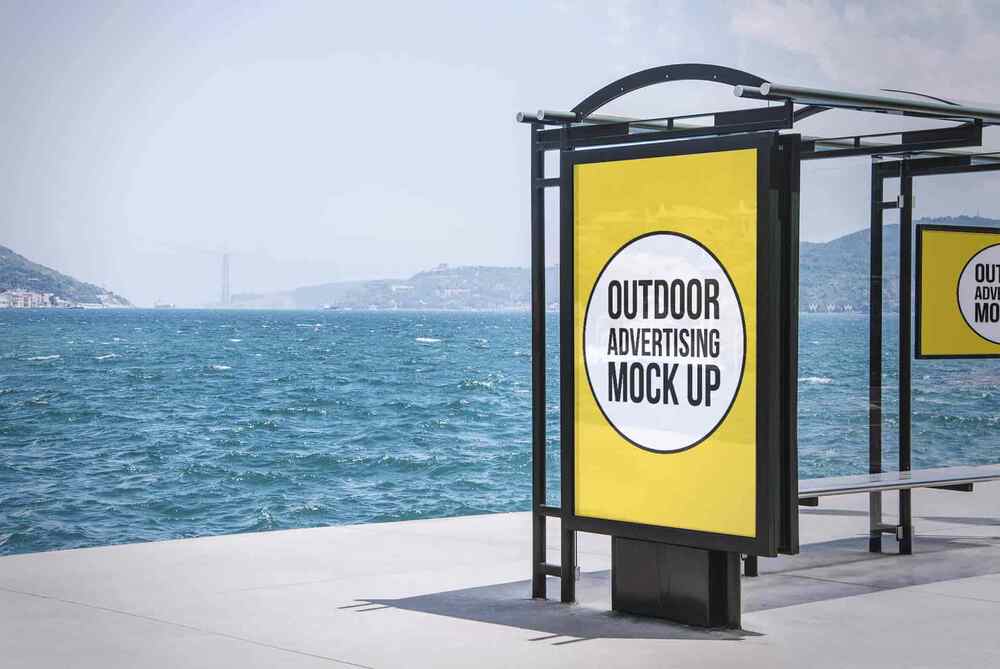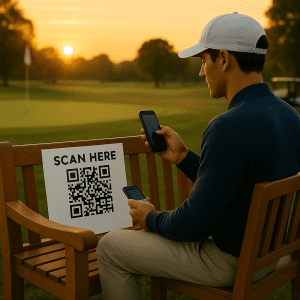In today’s competitive and rapidly evolving marketing landscape, brands are continuously searching for innovative ways to capture consumer attention and drive engagement. Traditional billboard advertising has long been a staple for outdoor campaigns, but it comes with its own set of challenges—high costs, limited targeting, and diminishing attention spans. Enter in-hand advertising, a compelling alternative that not only complements the power of outdoor visibility but also offers a more personal, measurable, and flexible approach to reaching your audience.
In this blog, we’ll explore how in-hand advertising can serve as a dynamic alternative to traditional billboard advertising. We’ll delve into the limitations of billboards, examine the unique benefits of in-hand advertising, and provide actionable insights for marketing professionals looking to harness this emerging strategy.
The Limitations of Traditional Billboard Advertising
 High Costs and Limited Flexibility
High Costs and Limited Flexibility
Billboard advertising has its merits—massive reach and high visibility. However, the high cost of billboard placements, especially in prime locations, can quickly eat into marketing budgets. Additionally, billboards offer limited flexibility in terms of message customization and dynamic content. Once a billboard is installed, the content is static and cannot be easily updated or tailored to different audience segments.
Broad, Non-Targeted Exposure
One of the significant drawbacks of billboard advertising is its lack of precision. Billboards broadcast a single, uniform message to all passersby, regardless of demographics or individual interests. This broad, one-size-fits-all approach means that while billboards might build general brand awareness, they often fall short in delivering targeted, relevant messaging that drives deeper engagement.
Diminishing Consumer Attention
In a world where consumers are bombarded with ads across multiple channels, the impact of billboard advertising is gradually waning. With visual clutter and oversaturation in urban environments, billboard messages are increasingly being ignored—a phenomenon known as “banner blindness.” In such a competitive space, brands must look for innovative methods to break through the noise.
What Is In-Hand Advertising?
In-hand advertising is a form of outdoor advertising that delivers tangible, physical marketing materials directly into the hands of your target audience. This method includes distributing items such as flyers, brochures, postcards, and even promotional products that carry your brand’s message. Unlike static billboards, in-hand advertising offers an interactive and personalized experience that captures attention in a way that digital screens and massive billboards cannot.
The Tangible Connection
The essence of in-hand advertising lies in its ability to create a tangible connection between the brand and the consumer. When someone physically holds a well-designed flyer or a creatively crafted promotional item, it triggers a sensory experience that can enhance recall and foster a more profound emotional connection with the brand.
Personalization and Customization
One of the standout benefits of in-hand advertising is its potential for personalization. Unlike billboards that broadcast a generic message to a broad audience, in-hand advertising allows marketers to tailor messages for specific segments. For example, a local restaurant might distribute in-hand advertising materials with personalized discount codes to nearby residents, ensuring that the message is both relevant and timely.
Flexibility and Agility
In-hand advertising offers a level of flexibility that traditional billboard advertising cannot match. Marketing professionals can quickly pivot their strategies, update creative content, or tailor messages based on real-time feedback. This agility is crucial in today’s fast-paced market where consumer preferences can change rapidly.
The Benefits of In-Hand Advertising Over Billboards
Enhanced Targeting and Localized Reach
One of the primary advantages of in-hand advertising is its ability to deliver highly targeted messages. By leveraging data on local demographics and consumer behavior, brands can ensure that their in-hand advertising materials reach the right audience at the right time. This hyper-local targeting not only improves engagement rates but also maximizes the return on investment (ROI) by reducing wasted impressions.
Higher Engagement Through Interactivity
In-hand advertising transforms passive viewers into active participants. When consumers receive a physical piece of marketing collateral, the interactive potential increases exponentially. Whether it’s scanning a QR code for a special offer or accessing augmented reality content through their smartphone, in-hand advertising creates an immersive experience that encourages immediate action.
Measurable Results and Improved ROI
Unlike billboard advertising, which often relies on estimated reach and broad assumptions, in-hand advertising can be closely tracked and measured. Digital integrations—such as QR codes, NFC chips, or unique promo codes—allow marketers to collect real-time data on engagement and conversion. This data-driven approach provides a clear picture of the campaign’s effectiveness, making it easier to optimize strategies and justify advertising spend.
Cost-Effectiveness and Budget Efficiency
While billboards require a significant financial investment for a short-term impression, in-hand advertising offers a cost-effective alternative that can be scaled based on budget and campaign objectives. By reducing the cost per impression and delivering personalized, targeted messages, in-hand advertising can achieve higher engagement rates at a fraction of the cost of traditional billboard advertising.
Implementing a Successful In-Hand Advertising Campaign
Cohesive Creative Strategy
A successful in-hand advertising campaign starts with a unified creative strategy. All physical materials—whether flyers, brochures, or promotional products—should reflect your brand’s identity and core messaging. Consistency in design and tone across all touchpoints reinforces brand recognition and builds trust with your audience.
For example, a campaign might use bold visuals and engaging copy that mirror the aesthetics of your digital marketing channels. This cohesive approach ensures that when a consumer encounters your in-hand advertising, they immediately recognize the brand and understand the campaign’s message.
Leveraging Data for Hyper-Local Targeting
Effective in-hand advertising relies on precise targeting. Utilize local data and analytics to determine the optimal distribution channels and locations. This might involve analyzing foot traffic patterns, local demographics, or even leveraging social media insights to identify high-potential areas.
By distributing in-hand advertising materials in targeted neighborhoods, at community events, or in partnership with local businesses, you can ensure that your message reaches the most relevant audience. This localized approach not only enhances engagement but also increases the likelihood of conversion.
Integrating Digital Touchpoints
One of the most powerful aspects of in-hand advertising is its ability to bridge the gap between offline and online experiences. Incorporate digital elements into your physical materials to drive further engagement. For instance, include QR codes or NFC chips on your flyers that lead consumers to interactive landing pages, special offers, or exclusive content.
This seamless integration of physical and digital elements not only enhances the consumer experience but also provides valuable data for tracking campaign performance. Digital touchpoints allow you to monitor how many consumers interact with your in-hand advertising, offering insights that can be used to refine future campaigns.
Continuous Monitoring and Optimization
The dynamic nature of modern marketing demands continuous monitoring and optimization. Set clear KPIs—such as engagement rates, conversion metrics, and customer feedback—to evaluate the performance of your in-hand advertising campaign. Use digital analytics tools to gather real-time data and adjust your strategies accordingly.
For example, if you notice that a particular region is responding well to your in-hand advertising materials, consider increasing distribution in that area. Conversely, if certain messages are not resonating, be prepared to update the creative content to better align with consumer expectations.
Real-World Applications and Success Stories
Case Study: Retail Revolution
A regional retail chain sought to boost in-store traffic and local engagement. Instead of investing heavily in expensive billboard advertising, the brand turned to in-hand advertising. They distributed creatively designed flyers featuring personalized offers at local events and community centers. The campaign, enhanced with QR codes leading to a special online discount page, resulted in a 35% increase in foot traffic and a significant boost in sales. This case study highlights how in-hand advertising can deliver targeted, measurable results that outpace traditional billboard methods.
Case Study: Automotive Innovation
An automotive company aiming to promote its latest model integrated in-hand advertising into its multi-channel strategy. While a few billboards provided general brand awareness, the company focused on distributing high-quality, interactive brochures at auto shows and partner dealerships. These brochures featured in-hand advertising with augmented reality elements, allowing potential buyers to visualize the car’s features in 3D. The immersive experience not only captured consumer interest but also resulted in a notable uptick in test drives and showroom visits.
The Future of In-Hand Advertising as an Alternative to Billboards
As consumer behaviors continue to evolve, the limitations of traditional billboard advertising become more apparent. The rise of digital technology and the demand for personalized, engaging content are paving the way for in-hand advertising to take center stage. With its ability to deliver targeted, interactive, and measurable campaigns, in-hand advertising is emerging as a superior alternative that offers both cost-effectiveness and higher ROI.
Looking ahead, the integration of digital analytics, augmented reality, and other innovative technologies will further enhance the capabilities of in-hand advertising. Brands that embrace this dynamic approach will be better positioned to capture consumer attention, build deeper relationships, and achieve sustainable growth.
Conclusion
Traditional billboard advertising has long been a cornerstone of outdoor marketing, but its limitations—high costs, broad targeting, and diminishing consumer attention—make it increasingly less effective in today’s diverse and digital-centric landscape. In-hand advertising presents a compelling alternative, offering tangible, personalized, and measurable solutions that align with modern marketing needs.
For marketing professionals looking to stay ahead of the curve, integrating in-hand advertising into your multi-channel strategy can drive significant engagement and deliver a measurable return on investment. By leveraging localized data, integrating digital touchpoints, and maintaining a cohesive creative strategy, in-hand advertising not only complements traditional outdoor campaigns but can also serve as a powerful standalone channel.
In an era where personalized consumer experiences are paramount, in-hand advertising stands out as a dynamic alternative to billboard advertising. It transforms the passive act of viewing an ad into an interactive experience that fosters engagement, builds brand loyalty, and ultimately drives sales. Now is the time to reimagine your advertising strategy and embrace the future with in-hand advertising.
Are you ready to elevate your marketing campaigns? Explore the endless possibilities of in-hand advertising as a modern, cost-effective alternative to traditional billboards, and discover how this innovative approach can transform your brand’s outreach and drive measurable success.


 High Costs
High Costs



